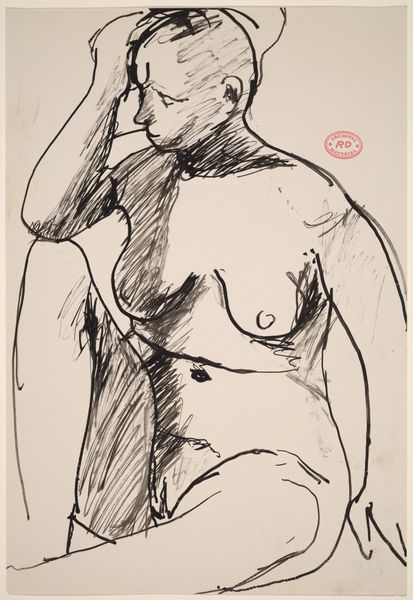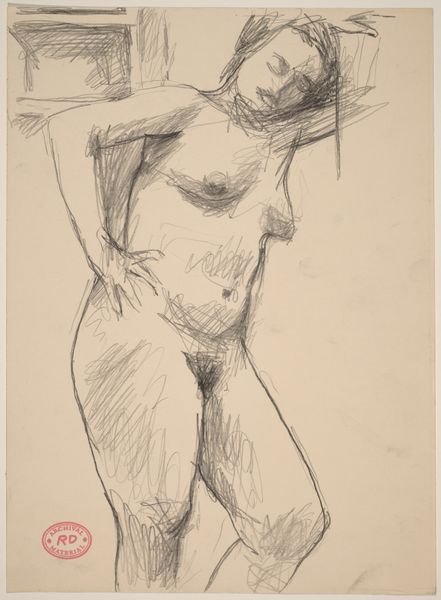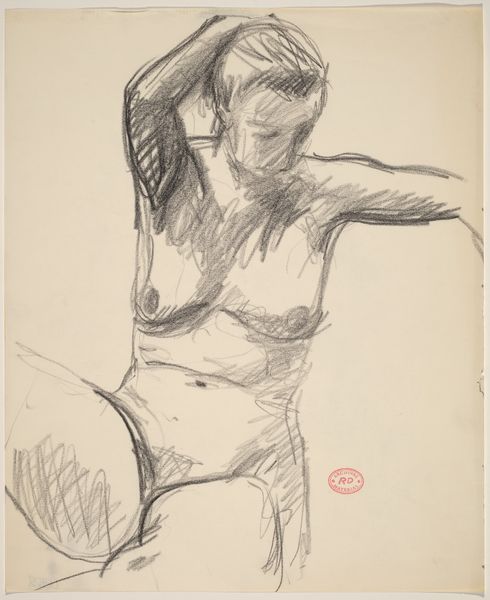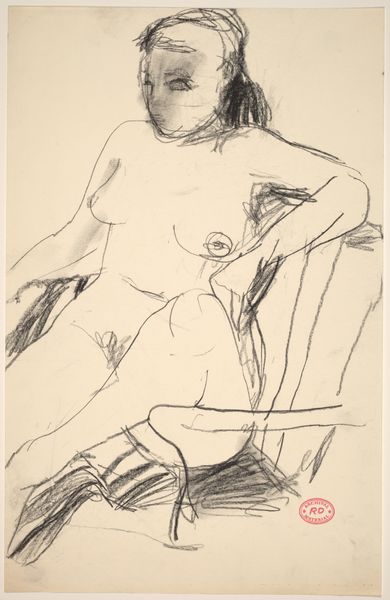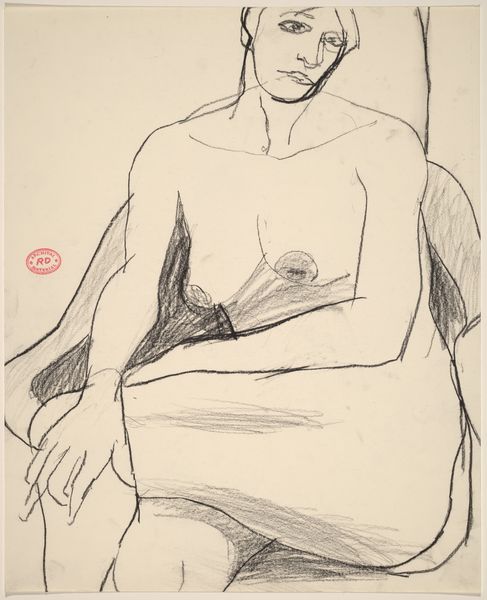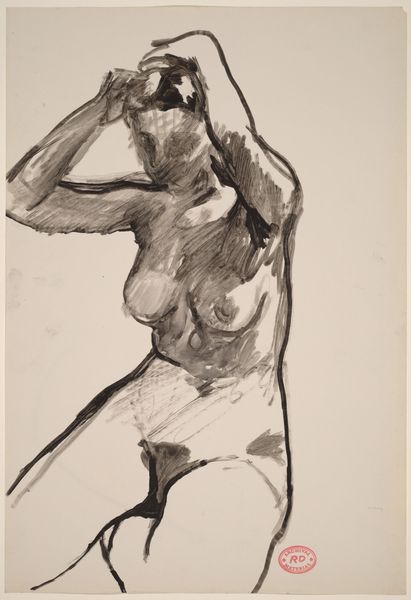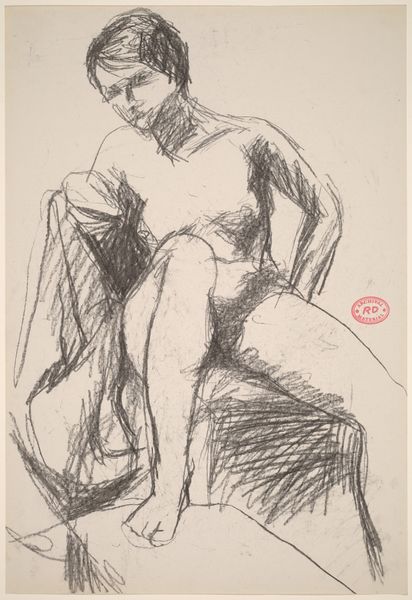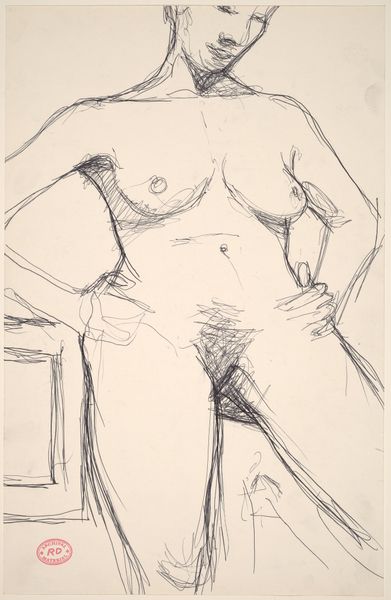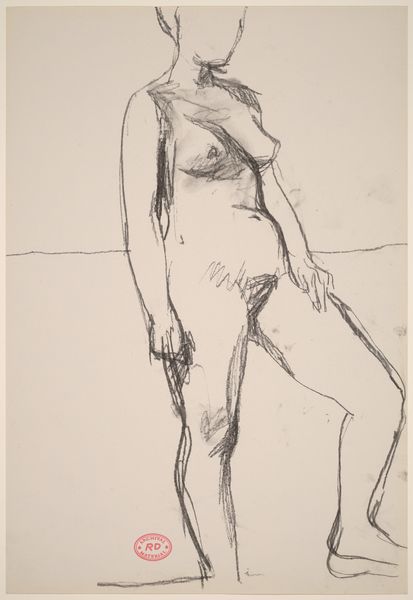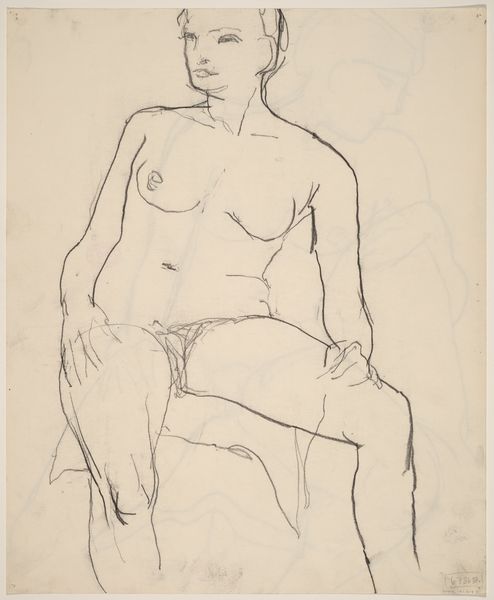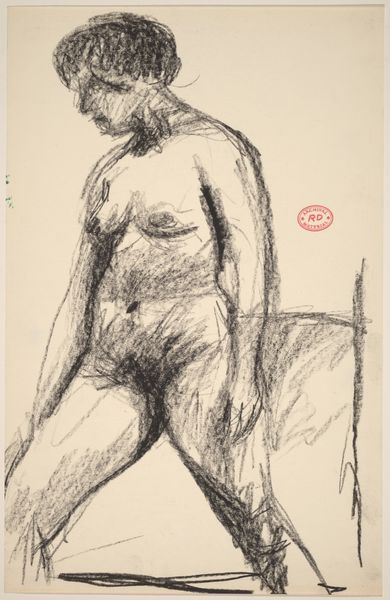![Untitled [standing female nude leaning on her left elbow] by Richard Diebenkorn](/_next/image?url=https%3A%2F%2Fd2w8kbdekdi1gv.cloudfront.net%2FeyJidWNrZXQiOiAiYXJ0ZXJhLWltYWdlcy1idWNrZXQiLCAia2V5IjogImFydHdvcmtzL2FiNjdiN2Q2LTIyNWMtNGY1Ny05OTE4LTJhMjk4YmI0ZWQ4MC9hYjY3YjdkNi0yMjVjLTRmNTctOTkxOC0yYTI5OGJiNGVkODBfZnVsbC5qcGciLCAiZWRpdHMiOiB7InJlc2l6ZSI6IHsid2lkdGgiOiAxOTIwLCAiaGVpZ2h0IjogMTkyMCwgImZpdCI6ICJpbnNpZGUifX19&w=3840&q=75)
Untitled [standing female nude leaning on her left elbow] 1955 - 1967
0:00
0:00
drawing, pencil
#
drawing
#
figuration
#
bay-area-figurative-movement
#
pencil
#
academic-art
#
nude
Dimensions: overall: 27.9 x 21.6 cm (11 x 8 1/2 in.)
Copyright: National Gallery of Art: CC0 1.0
Curator: What I notice first is a sense of hesitant strength—the lines are sketchy, unsure, yet they describe a figure of considerable presence. Editor: Absolutely. We're looking at Richard Diebenkorn’s "Untitled [standing female nude leaning on her left elbow]," created sometime between 1955 and 1967. A pencil drawing of a nude figure, yes, but I see it more as a cultural artifact shaped by the prevalent artistic styles and social views on the body in post-war America. The way Diebenkorn renders this body raises questions of representation. Curator: The gaze she directs, seemingly inward, strikes me. It diverges from the typically objectified female figure found within the canon. There's a thoughtfulness suggested by her averted gaze. Could that reflect, even inadvertently, some shift in how women began to be seen in that period? Editor: Possibly, but the question is how deliberately. Diebenkorn, though participating in mid-century figurative traditions, was also absorbing abstract expressionism. This work reveals that tension, a push-pull between observing the human form and deconstructing it. We must consider the influence of Abstract Expressionism on figurative art during this period, and its role in influencing visual art depictions. Curator: And isn't there something subtly rebellious about the way the weight of her form is depicted? There's an honesty here in the sketchiness itself, an acknowledgement of the imperfections inherent in both the model and the artistic process. We must ask, were artists subtly breaking from restrictive social mores through depictions of form? Editor: Perhaps "rebellious" is too strong. I think Diebenkorn was responding more directly to his artistic milieu—the debates between abstraction and figuration were dominating art world conversations. While artists might imbue their works with implied social critiques, artists are mostly in response to internal conflicts and tensions within the field. Curator: Fair enough, though it feels reductive to disregard any inherent socio-political meaning. After all, art exists as dialogue between artist and culture. Perhaps this is a glimpse of Diebenkorn wrestling with the gaze, both his own and that of the viewer. Editor: Ultimately, for me, this drawing encapsulates the artistic atmosphere of the mid-20th century. How do we represent reality after abstraction has shattered our traditional lenses? Curator: I see in the simplicity of the medium and subject a yearning to express, even falteringly, authentic human presence. Editor: A complex, compelling intersection of intention and influence.
Comments
No comments
Be the first to comment and join the conversation on the ultimate creative platform.


